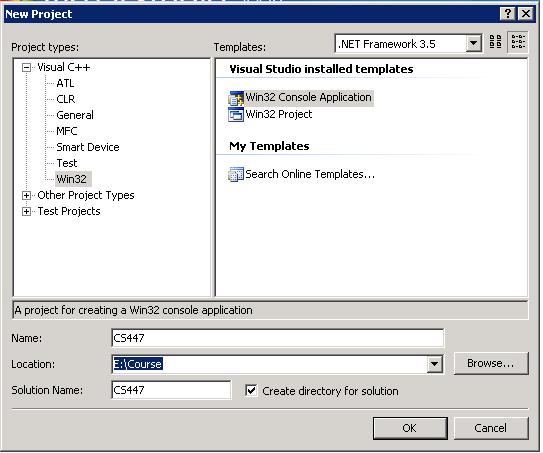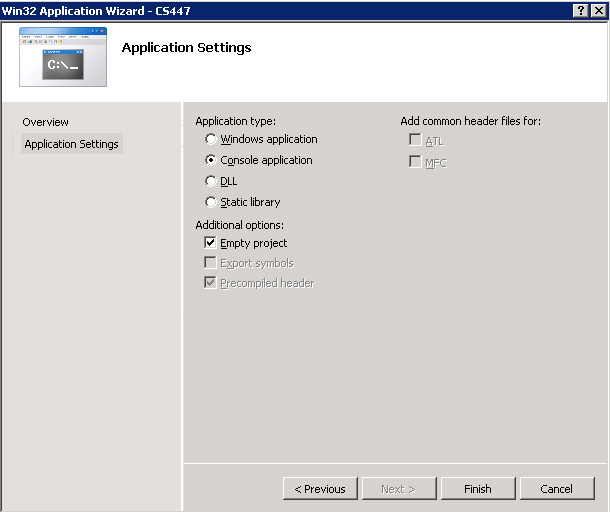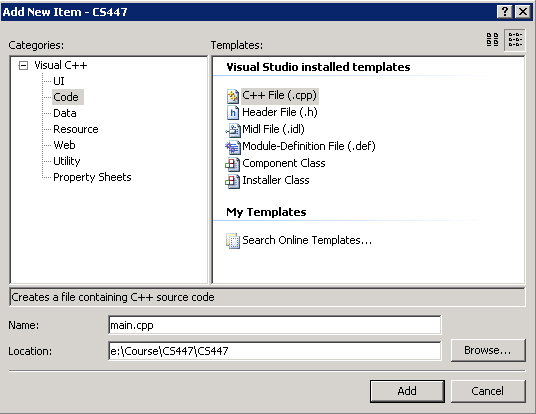Choose File -> New -> Project from the Visual Studio menus. You should get this dialog box.
We wish to create a Win32 Console Application Project .
Set the location to someplace on your computer and give the project a name, in this case CS447.
Click OK.

Go to the Application Settings tab.
Make sure Console application and Empty project and selected.
Click Finished.
For VS 2017 users:
1) Choose File -> New -> Project -> Installed -> Visual C++ and select Empty Project.
2) Choose Project -> Property and open a Configuration Properties panel.
Go to Linker -> System and change the Subsystem option to Console.


